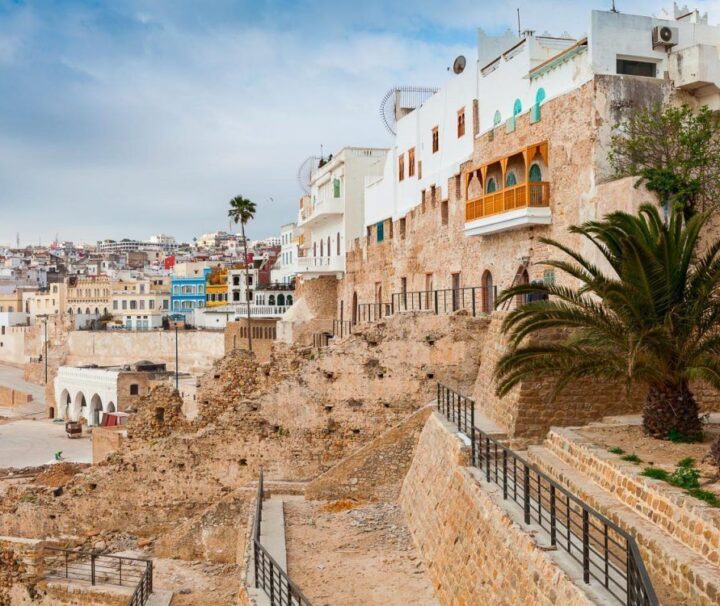Top Destinations of Portugal
Some of the most visited sites
Lisbon has always been the most popular destination in Portugal, but given its size, the country is amazingly diverse. From astuning cliffs that buffer the Atlantic to cork forests and olive groves. Let us propose you the MUST SEE towns of Portugal.
Sintra
Palace da Pena is the highlight, one of the best examples of 19th century Romantic ressurgence in Portugal. Set at the top of the Monte da Pena, the palace was built on the site of an old monastery belonging to the Order of St. Jerome. It was the result of the imagination of Dom Fernando of Saxe Coburg-Gotha.
After falling in love with Sintra, he decided to buy the convent and the surrounding land to build a summer palace for the royal family. The result was a mixture of architectural styles. He also established an english style woodland park with a wide variety of exotic trees.
The highlight of the palace’s interior is the chapel. Its alabaster altarpiece is attributed to one of the architects of the Mosteiro dos Jeronimos in Lisbon. Also, there’s a restaurant in one of the wings of the palace. There you’ll get a panoramic view of Serra de Sintra and the coast.
Looking for Halal Restaurants in Porto? Find a near by Halal Restaurant in Algarve
Porto
The second largest city in the country, it’s located at the mouth of the Douro River. Its historic center is a UNESCO World Heritage Site. The city’s Cais da Ribeira riverfront is its center and its most picturesque part.
The area has a mix of ancient narrow streets and alleyways with centuries old buildings. Old homes of granite and tile loom over the waterfront, that’s filled with Rabelo boats and river excursion ships. The riverfront area comes alive in the evening when numerous cafés and restaurants open.
Looking for Halal Restaurants in Porto? Find a near by Halal Restaurant in Porto
Madeira
Madeira is a group of four Portuguese islands off the coast of North Africa. Funchal, its capital, is a walkable city with a nice harbor and a cathedral more than 500 years old. It’s perpetually sunny, but when the sun goes down, the tempo picks up in its nightclubs, restaurants, and casinos.
Some associate the Monte area of Funchal with wicker “toboggan rides” that first appeared around 1850. Originally, this was a fast means of transportation to central Funchal for people living up the steep hillside in Monte.
Presently, the toboggans continue to attract tourists who want to sled down a narrow, winding street to the city below. The one-mile downhill journey takes about 10 minutes, sometimes reaching a speed of 30 miles an hour. You can take a cable car back up.
Looking for Halal Restaurants in Porto? Find a near by Halal Restaurant in Madeira
Coimbra
Roughly halfway between Lisbon and Oporto in the north, Coimbra was once the capital of the Portugal. However, it’s most famous for the University of Coimbra, founded in 1290 and one of the oldest universities in Europe. Furthermore, it’s a city of medieval churches and a maze of medieval streets. Presumably, that’s the reason some consider it the most romantic city in Portugal.
Overlooking the city and the Mondego River, the University is a rambling building, constructed around a central courtyard. Its entrance is through the Porta Férrea (Iron Gate), an impressive Mannerist work (1634). There one can also see the statues of the University´s patrons, the Kings Dom Dinis and Dom João III.
You’ll see students all around the city, identified by the black capes they still wear. The little colored ribbons on their briefcases denoting the school they attend. I came across a group of young female students in their capes on a downtown street singing acapella for passersby.
Evora

A unique and historic city, 2,000-year old Evora is labyrinthine of streets and city squares, Renaissance fountains, Moorish courtyards and Gothic doorways and turrets. The Romans created its elegant temple, battlements, and baths, and the Moorish “Yeborah” influenced the urban network of the Mouraria district.
Évora is a beautiful town at the foot of the mountain range of the same name. Consequently, its unique characteristics led UNESCO to classify it as a World Heritage site.
Incidentally, it was even necessary for UNESCO to create a special category, that of “cultural landscape.” Accordingly, this was to take into account the natural riches of the mountains as well as the historic town.
King João II chose it for the wedding of his successor to the daughter of the Catholic Monarchs. King Manuel I established his court in Évora as did King João III.
Ironically, Praça do Giraldo of Evora, where open-air cafes now serve coffee to tourists, was once the location of public executions.
You may also like check our videos
Youtube




